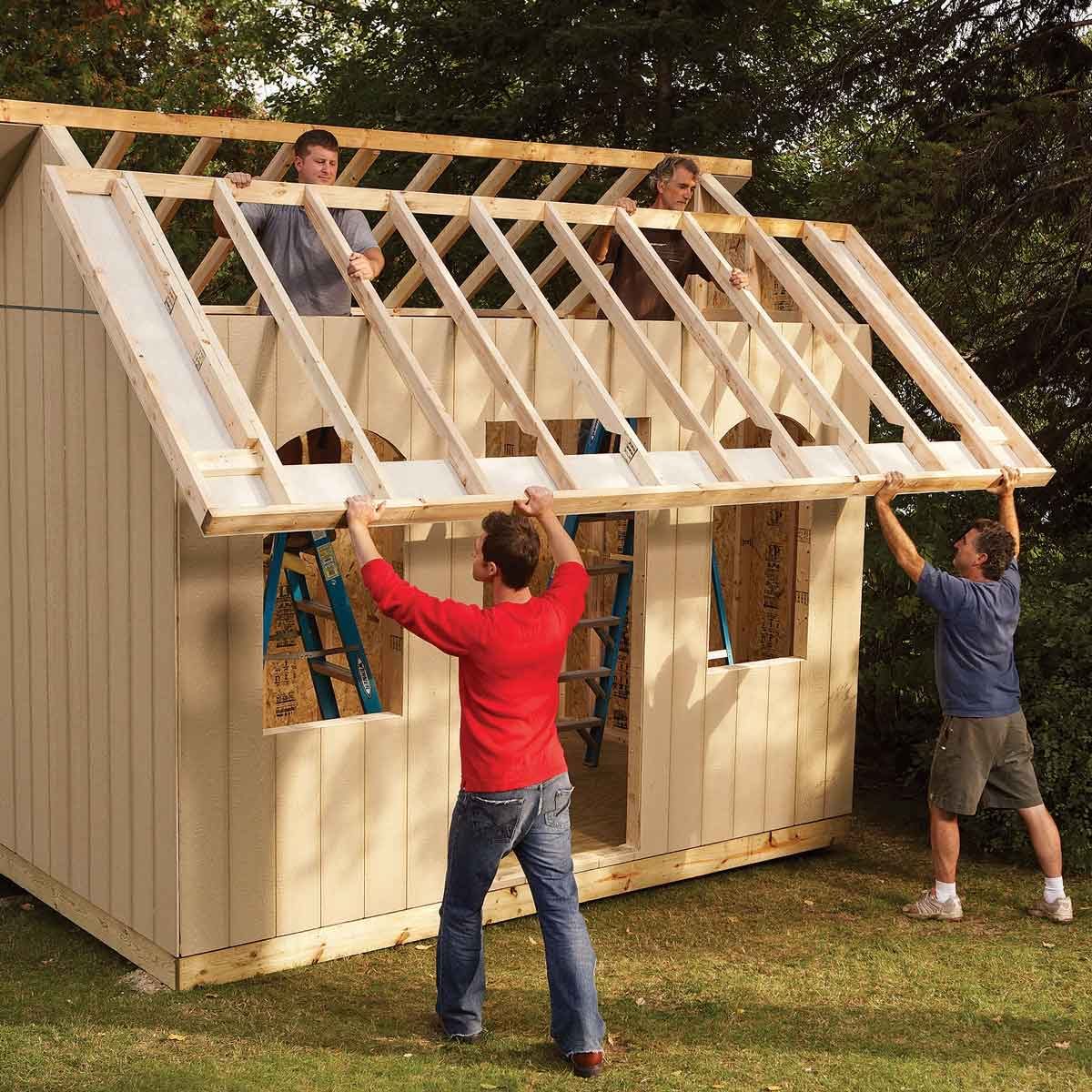
Hey there, green thumb enthusiasts! So, you've decided to take the plunge and build your own garden shed. You're dreaming of a place to store your tools, organize your seeds, and maybe even a comfy corner to enjoy a cup of tea while admiring your handiwork. Awesome! Building a shed is a fantastic project, and with the right guidance, you can make it a real masterpiece.
Let's dive into this journey together, from planning to the final nail. We'll break down each step in a way that's both informative and easy to follow. Don't worry, we're not going for rocket science here. Just think of it as a fun, hands-on adventure in DIY.
1. The Great Planning Game
Before you start throwing lumber around, it's crucial to lay down the groundwork. First things first, you need to decide what your shed will be used for. Need a place for your mower and garden tools? Maybe you're dreaming of a mini potting station. Or maybe you want a space to grow your own exotic orchids!
Once you've got a clear vision, you can move on to the fun part: sizing your shed. Think about the space you need, and don't be shy! It's better to have a bit more room than to feel cramped.
Here's a quick checklist to get you started:
Location, Location, Location: Choose a spot with good drainage, access to power (if needed), and enough sunlight for those precious plants.
Style and Design: Do you want a traditional wooden shed, or something more modern? Consider the materials, roof style, and windows.
Budget: Set a realistic budget and factor in the cost of materials, tools, and any necessary permits.
Permits: Check your local building codes for any required permits. You don't want your dream shed becoming a legal nightmare.
2. Let's Get Down to Business (and Tools!)
Now, let's talk tools. You'll need a few essentials to get started:
Measuring Tape: The foundation of your project. You'll use it for everything from cutting lumber to spacing boards.
Level: Crucial for ensuring your shed stands straight and true.
Saw: Choose a saw based on your comfort level, from a simple handsaw to a circular saw.
Hammer: For pounding nails and securing those wooden pieces.
Drill: You'll use it for pre-drilling holes to avoid splitting wood and for attaching hardware.
Screwdriver: A handy tool for fastening screws.
Safety Gear: Don't forget your safety glasses, work gloves, and ear protection.
3. The Foundation: Where Your Dream Begins
The foundation is the bedrock of your shed, literally! It provides stability and prevents your shed from sinking into the ground.
Here are your foundation options:
Concrete Slab: This is the most durable and long-lasting option. It's perfect for heavier sheds and provides a smooth, flat surface.
Concrete Blocks: These are a cheaper alternative to a slab. They're relatively easy to install and provide a sturdy base.
Pressure-Treated Lumber: This option is great for less-permanent structures. Just make sure the lumber is adequately treated to resist rot and decay.
4. Framing: The Skeleton of Your Structure
Now comes the exciting part: building the frame! Use pressure-treated lumber for the bottom plate, which will sit on the foundation.
Measure and Cut: Use your measuring tape and saw to cut the lumber to the desired length.
Construct the Walls: Build the walls by attaching the studs vertically to the bottom plate. Don't forget to include bracing for extra stability.
The Roof: The roof framing involves attaching the rafters to the top plates. The angle of the rafters will depend on the type of roof you've chosen.
5. Sheathing and Siding: Covering Your Creation
Once the frame is up, it's time to start covering it!
Sheathing: Use plywood or OSB sheathing to cover the walls and roof. This will provide structural support and a smooth surface for the siding.
Siding: Choose the siding that best suits your style. Options range from traditional wood siding to more modern materials like vinyl or fiber cement.
6. Roofing: A Shelter From the Storms
Your roof is the final layer of protection for your precious shed.
Underlayment: Install a layer of roofing felt to provide a water-resistant barrier.
Shingles: Choose the roofing shingles that best match your style and budget. Asphalt shingles are a popular choice for sheds.
Flashing: Install flashing around any penetrations in the roof, like vents or skylights, to prevent water leaks.
7. Doors and Windows: Let the Light (and Storage) In!
Doors and windows add functionality and style to your shed.
Doors: Choose a door that's the right size and fits your style. You can opt for a single door or a double door, depending on your needs.
Windows: Windows provide natural light and ventilation. Consider the location and size to maximize light and minimize heat gain.
8. Finishing Touches: Adding the Personal Flair
Now for the fun part! This is your chance to really personalize your shed.
Painting: Choose a paint color that complements your garden and style.
Flooring: Add a layer of flooring to make your shed more comfortable. You can choose from wood, vinyl, or even concrete.
Shelves and Storage: Organize your shed with shelves, pegboards, and other storage solutions.
9. Maintenance: Keeping Your Shed in Tip-Top Shape
Once your shed is built, it's important to maintain it to keep it looking good and lasting for years to come.
Regular Cleaning: Sweep out the shed regularly and remove any debris.
Paint Touch-Ups: Touch up the paint as needed to prevent rust and damage.
Roof Inspections: Check the roof for any signs of damage or leaks.
Congratulations, You Did It!
Building a shed can be a rewarding experience. You've now got a custom-built haven for your tools, plants, and maybe even a little relaxation. Enjoy your new garden sanctuary!

No comments:
Post a Comment
Note: Only a member of this blog may post a comment.